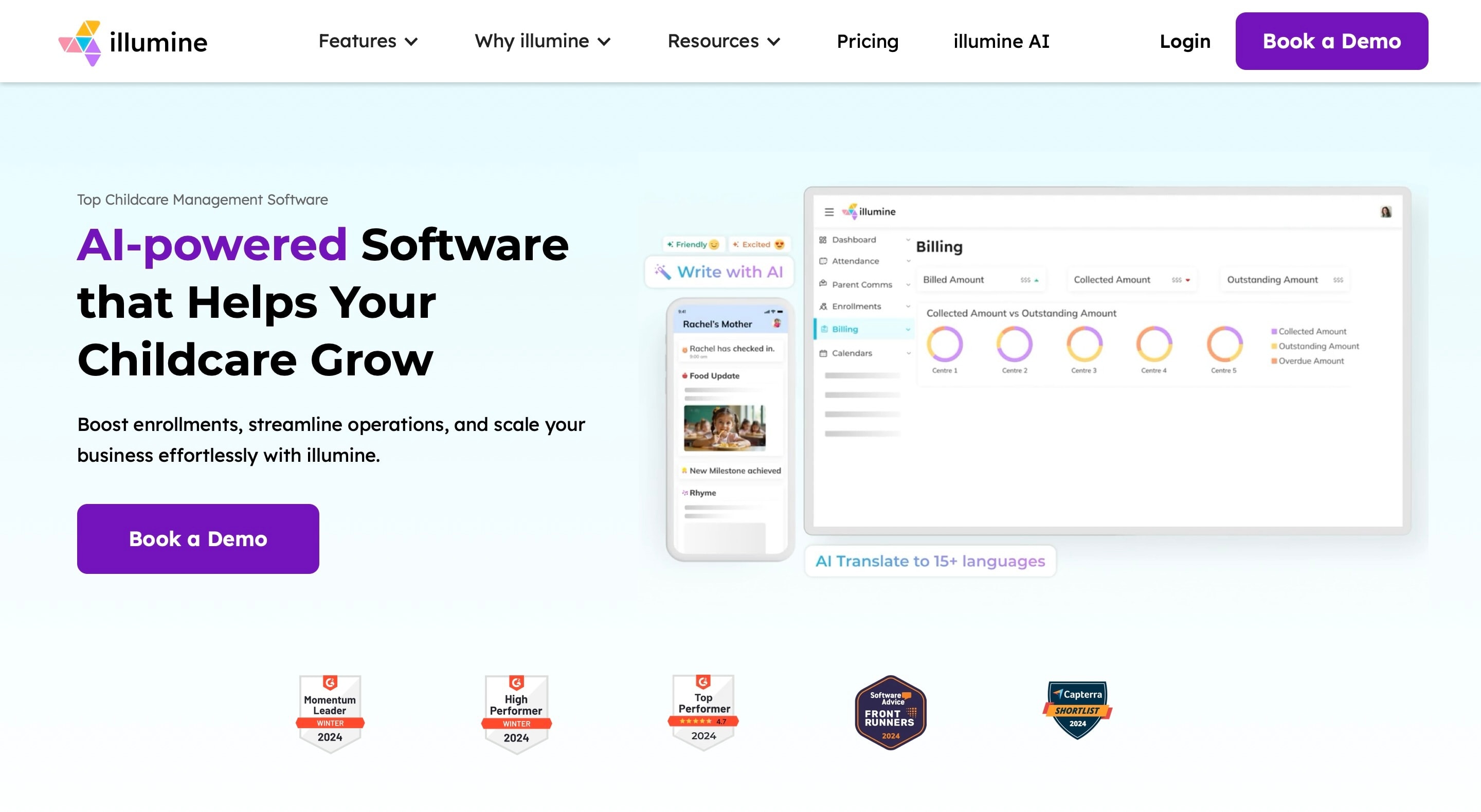Saying goodbye can be one of the hardest moments in a toddler’s day. For parents and educators, watching a child cry, cling, or resist being left behind is emotionally challenging. But this behavior is a normal part of early childhood development, often called normal separation anxiety.
Separation anxiety in toddlers signals that a child has formed strong attachments and is learning to manage absence. The key is helping the child feel safe and supported when apart from their caregiver. A thoughtful, consistent approach can ease fear, support the child’s development, and prevent separation anxiety disorder, reducing excessive worry or setbacks in mental health later.
This guide explains why a child’s separation anxiety occurs, how long it typically lasts, and key points for parents and educators to ease the transition during drop-offs and daily life in school or child care settings.
What is Separation Anxiety in Toddlers?
Separation anxiety is the emotional distress a child experiences when separated from a parent or trusted caregiver. It typically appears around 8 to 10 months of age and peaks between 12 and 24 months, a normal part of childhood. As toddlers grow more aware of their surroundings, they realize their family member is leaving but don’t fully understand that the separation is temporary.
![[Alt] Separation Anxiety Disorder Symptoms](https://cdn.prod.website-files.com/66d3d04b471f696dd27e3750/68761b059a70e36f7306cfab_fbb227bd-4067-46fe-b394-7f93fe830967.webp)
Common separation anxiety disorder symptoms include:
- Crying or tantrums during drop-offs
- Refusing to engage in play or activities after the caregiver leaves
- Clinging or refusing to let go of the parent
- Difficulty with sleep, such as waking frequently
- Regression, like wanting to be carried or fed
While normal separation anxiety is expected in young children, significant distress that disrupts daily life may indicate an anxiety disorder, such as separation anxiety disorder. The Diagnostic and Statistical Manual of Mental Disorders (often referred to as the statistical manual) identifies separation anxiety disorder as more persistent and impairing than typical behavior, distinct from generalized anxiety disorder or social anxiety disorder.
What Triggers Separation Anxiety?
A child’s separation anxiety is influenced by genetic and environmental influences and emotional triggers:
- Starting preschool or child care for the first time
- Changes in family routine (new sibling, move, or a parent returning to work)
- Inconsistent drop-off or pick-up times
- A negative experience during past separations
- Unfamiliar caregivers or classroom settings
Life stress, such as divorce or illness, can heighten anxiety symptoms in toddlers. Understanding these triggers helps parents and educators respond with empathy, creating security so the child feels safe and settles more easily, which can prevent separation anxiety disorder.
How Long Does Separation Anxiety Last?
Most toddlers outgrow normal separation anxiety by age three or four, the typical preschool age. However, short separations may cause temporary anxiety during transitions. If a child’s separation anxiety persists beyond this age or disrupts daily life, it may signal an anxiety disorder like separation anxiety disorder, generalized anxiety disorder, or, rarely, panic disorder.
A 2024 report in the Journal of Child Psychology and Psychiatry notes that 75% of toddlers experience mild normal separation anxiety, but only a small percentage develop separation anxiety disorder. Older children with intense fear may be at risk for other anxiety disorders, like social anxiety disorder, if unaddressed. Consistent support from parents and educators is crucial to help the child develop emotional safety and prevent separation anxiety disorder.
Tips for Educators: How to Ease Separation Anxiety in the Classroom
Educators are often the first to support a child during separation in the classroom. Effective strategies to manage a child’s anxiety include:
- Establish predictable routines
Consistent arrival routines help a child anticipate the day. Greeting them at the door or starting with a calming activity builds security. Explore how to create an age-appropriate rhythm in this guide on creating the best daycare schedule for toddlers. Predictable routines reduce fear and anxiety symptoms in daily life. - Offer a calm and warm welcome
A soft voice, eye contact, and gentle demeanor reassure a child they are safe in the room. This connection sets a positive tone for the school day and builds trust over time. - Use simple goodbye rituals
Collaborate with parents to create a brief goodbye ritual—a hug, wave, or handshake—to provide closure. Short separations become easier when the child knows what to expect, reducing panic attacks and worry. - Involve the child quickly in activities
Engage the child in hands-on play after arrival to shift focus from separation to exploration. When a child develops interest in activities, the caregiver’s absence feels less overwhelming, easing the child’s condition. - Communicate frequently with parents
Sending timely updates or photos builds trust between family members and educators. Clear and consistent communication supports the child’s mental health and reduces excessive worry.
Tips for Parents: Supporting Your Child Through Transitions
Parents can help their child by setting clear expectations and reinforcing routines:
- Talk about school at home
Read books about preschool, role-play drop-offs, and use positive language. These steps normalize short separations and help your child build coping skills, reducing the risk of anxiety disorders like social anxiety disorder. - Introduce transitional objects
A familiar blanket, photo, or toy offers comfort during the school day. These items ease anxiety symptoms and give the child a sense of control. - Keep goodbyes short and confident
Avoid long or emotional farewells. A calm goodbye communicates trust, helping to prevent panic attacks or other mental disorders over time. - Be consistent
Stick to routines, even if drop-offs are hard. Consistency in early childhood teaches the child that separations are safe, helping to prevent separation anxiety disorder. - Work as a team with educators
Share insights with teachers and seek feedback. Unified support helps the child adjust faster, fostering trust among family members and reducing the risk of generalized anxiety disorder.
Common Mistakes That Can Make Separation Anxiety Worse
- Sneaking away without a goodbye can create distrust and worsen the child’s condition.
- Making false promises, like “I’ll be back in five minutes,” leads to confusion and may trigger panic attacks.
- Showing your own worry can heighten the child’s separation anxiety, increasing the risk of other anxiety disorders or depression.
These mistakes can disrupt emotional regulation during the preschool years.
Preparing Toddlers for Separation: Building Emotional Readiness
To ease a child’s separation anxiety before school starts:
- Practice short separations at home
- Tour the preschool or meet the teacher in advance
- Read picture books about separation
- Role-play routines with toys or games
Hosting events like an open house can help. Here’s how to plan a preschool open house to build trust and boost enrollment. These steps reduce extreme fear when parents leave and help prevent separation anxiety disorder.
When Separation Anxiety Becomes Something More
Most cases of normal separation anxiety resolve with support. However, watch for signs of a more severe anxiety disorder in school-age children:
- Intense distress beyond the child’s age (past 4)
- Physical symptoms like nausea or vomiting before school
- Excessive fear of harm to family members
- Difficulty with sleep or repeated nightmares
While most toddlers outgrow separation anxiety with support, it can sometimes become more intense. If your child shows severe distress, like vomiting, refusing to eat, or extreme fear of separation, consider seeking help. These symptoms may require pediatric urgent care, especially if they disrupt daily life. Early intervention can make a significant difference in your child’s well-being and their ability to continue going to preschool.
The American Academy of Pediatrics states that early intervention with play-based therapy or counseling is effective for preventing long-term mental disorders. The CDC notes that anxiety disorders affect about 1 in 10 school-age children. An early diagnosis can lead to a treatment plan that improves the child’s anxiety and mental health.
Support Tools for Educators: How illumine Can Help

Managing a child’s separation anxiety is one of many tasks in child care. Educators also plan lessons, document observations, and communicate with families. Using a childcare management software like illumine, trusted by over 3,000 preschools globally, simplifies several such tasks with AI-driven tools:
- Create developmentally appropriate lesson plans with AI suggestions
- Capture and tag classroom observations in real time
- Compile assessment reports using AI-assisted insights and structured formats
- Translate messages instantly to communicate across languages
- Use AI to polish and professionalize parent comms for consistency and clarity
These tools help educators focus on supporting toddlers and other children in the preschool years, addressing anxiety and fear while improving classroom life.
Final Thoughts
Normal separation anxiety in young children is temporary. With trust and support from parents and educators, a child can face new experiences confidently, reducing the risk of severe mental disorders. When family and school align, the child benefits from emotional safety, helping other children of the same age thrive.
For educators, illumine reduces the stress of documentation with AI, allowing more time to help your child feel secure. Every calm goodbye builds a foundation for a confident tomorrow.


.webp)







.webp)